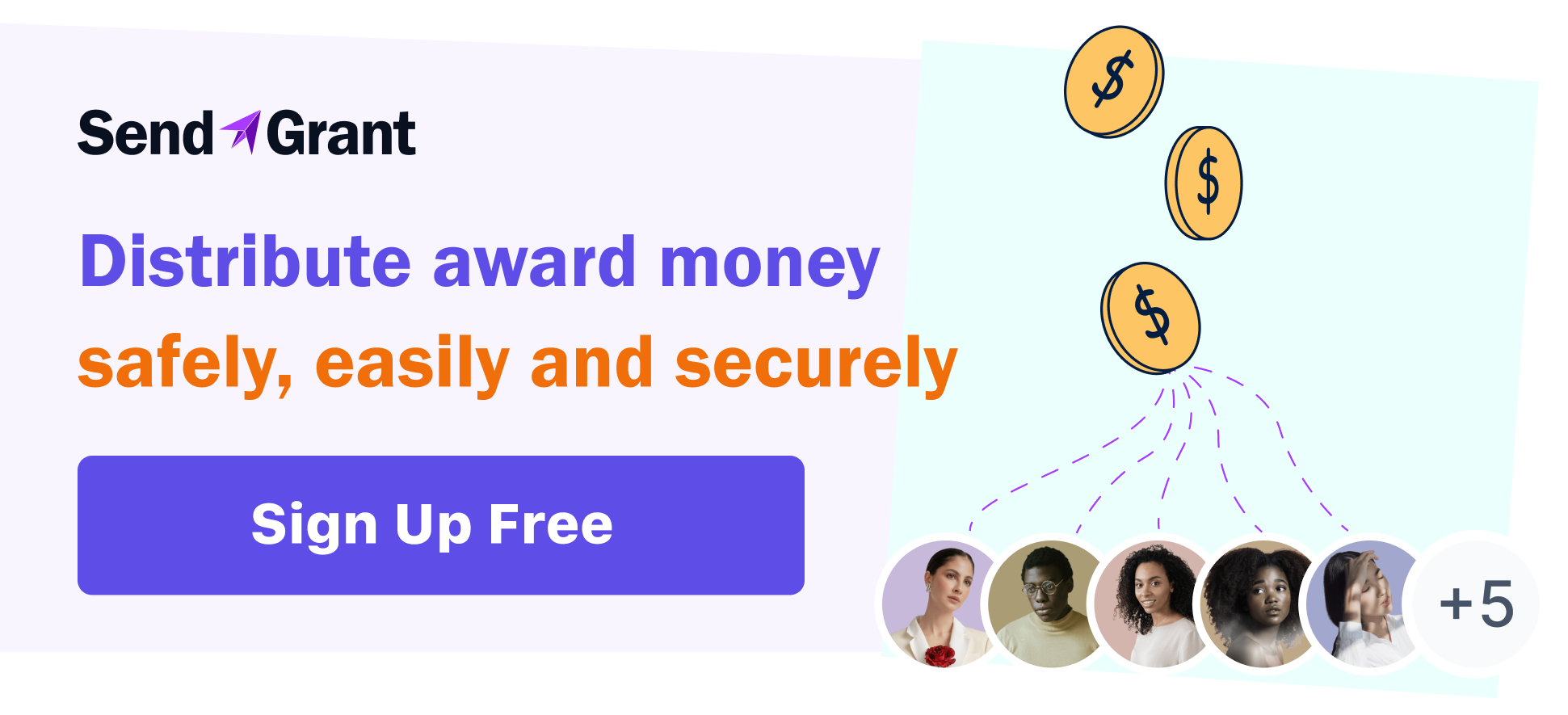Accurate Grant Payment Forecasting: A Data-Driven Approach

The ability to accurately forecast grant payments is essential for effective financial management of organizations. With a data-driven approach, grant managers can use various data sources to create detailed and comprehensive forecasts and stay on top of changing payment trends. In this article, we will discuss the importance of an accurate grant payment forecasting system and the considerations that should be taken when implementing such a system.
What is Grant Payment Forecasting?
Grant payment forecasting refers to the process of predicting the amount of money that will be disbursed by a grant-making organization to the grant recipients over a certain period. The reason it’s so important is so that grant makers, just like you, can make informed decisions and manage resources effectively.
Forecasting grant payments can help you to:
- Avoid over commitment of your funds
- Prevent the risk of financial shortfalls
- Plan better for the future.
If you’re not using good grant payment software however, grant payment forecasting can cause quite the headache. Using a data-driven approach rather than guessing at what you have in your accounts can help you to more accurately plan ahead.
The benefits of a data-driven approach
Using a data-driven approach in your grant payment forecasting will result in:
- Improved accuracy
- Cost savings
- Faster decision-making, and
- Improved transparency
Gaining a Deeper Understanding of Grant Payment Forecasting
We’ve established that grant payment forecasting can help you to more accurately predict how much money your organization will disburse in a given period of time. Now let’s break this down a little further. For example, what are some of the challenges your organization could experience while trying to forecast grant payments?
If you were to go it alone - i.e. not use software that is built for this kind of thing - you might experience limited data for your past payments which makes it harder identify patterns:
- Were there changes in program requirements?
- What about grantee performance? Not everyone performs as you expect them to with the grants they receive
- Were there unanticipated events that impacted your own organization? For example, in 2020 no one could have predicted the world would essentially shut down due to the coronavirus pandemic. As a result, donor relations and charitable events may have been strained negatively impacting the amount of funds available
Not having thorough records of past grantmaking activities can result in difficulties in making more informed decisions.
Traditional approaches to grant payment forecasting
Traditional approaches to grant payment forecasting typically involve manual processes such as spreadsheets or databases. These approaches can be time-consuming, and because they are not automated, they are often prone to error.
Another approach is to use financial models to predict future grant payments. These models may use statistical methods such as regression analysis to identify trends and patterns in past payment data and use them to predict future payments.
However, traditional approaches have limitations. For example, you might have trouble accounting for changing program requirements or unanticipated events that may impact payment patterns.
To make matters worse, because spreadsheets and databases aren’t always connected, analyzing your information may be difficult.
That’s why so many organizations are turning to data-driven approaches backed by software. Automating your process with the help of software makes it significantly easier to analyze your payment data. Thanks to machine learning algorithms that can run the numbers for you, grant payment forecasting becomes not only much easier to do, but it’s also a lot more accurate.
What is a Data-Driven Approach to Grant Payment Forecasting?
A data-driven approach to grant payment forecasting involves analyzing historical data and other relevant data sources with the help of software to predict future grant payment amounts and timing.
This approach relies on statistical models, machine learning algorithms, and other data analysis techniques to identify patterns and trends in the data, and use this information to make accurate forecasts.
As we shared above, turning to a data-driven approach will help you improve your accuracy and transparency. You’ll also enjoy faster decision making as well as improved allocation of your resources.
Components of a data-driven approach
A data-driven approach to grant payment forecasting typically involves the following components:
- Data collection: Collecting relevant historical data and other relevant data sources such as payment history, grantor/funder patterns, grant terms and conditions, etc.
- Data cleaning and preprocessing: Cleaning the data to remove any outliers, inconsistencies, or errors, and preprocessing the data to prepare it for analysis.
- Data analysis: Using statistical models, machine learning algorithms, and other data analysis techniques to identify patterns and trends in the data.
- Model selection: Selecting the best model or algorithm for the particular data set and desired forecasting outcomes.
- Model training: Using the selected model or algorithm to train the forecasting model using historical data.
- Model validation: Testing the forecasting model against actual outcomes to ensure its accuracy and reliability.
- Forecasting: Using the forecasting model to predict future grant payment amounts and timing.
How to Implement a Data-Driven Approach in Your Organization
It starts with gathering and organizing your data. The best and easiest method of doing this is using grant payment software like SendGrant.
Plugging in your numbers has never been easier. The longer you use it, the better because it will give you historical payment data as well as information about:
- Grantee performance
- Your program’s requirements
- Relevant factors that can impact your payment patterns
Software helps ensure your data is reliable, and as a result you can trust your analyses.
Preparing and cleaning data
Before analyzing the data, it is important to prepare and clean it. This involves removing duplicates, filling in missing values, and correcting any errors in the data. Data preparation and cleaning are essential to ensure that the analysis is accurate and reliable.
The good news is, when you use software like SendGrant, cleaning your data is pretty much handled automatically. If there are duplicates or errors, the program will flag it for your review so you never have to worry about inaccuracies when forecasting grant payments.
Selecting the appropriate forecasting model
Once the data is prepared and cleaned, the next step is to select an appropriate forecasting model. There are several different types of models that can be used for grant payment forecasting, including:
-- Regression analysis
-- Time-series analysis, and
-- Machine learning algorithms
Your choice of model will depend on the type of data being analyzed and the specific goals of the analysis.
Validating and testing the model
After selecting a model, it is important to validate and test it. This involves comparing the model's predictions to actual payment data to determine its accuracy. If the model is found to be inaccurate, adjustments may need to be made to improve its performance. Validating and testing the model is an ongoing process that should be conducted regularly to ensure that the model remains accurate and reliable over time.
Overall, implementing a data-driven approach to grant payment forecasting requires careful planning, data collection, and analysis. By gathering and organizing data, preparing and cleaning it, selecting an appropriate forecasting model, and validating and testing the model, grant-making organizations can make more accurate predictions about future payments and optimize their resource allocation.
Results and Analysis - Traditional vs a Data-Driven Approach
Traditional approaches to grant payment forecasting rely on manual processes and historical information, which can be time-consuming and prone to errors. In contrast, a data-driven approach uses advanced analytical techniques to process large amounts of data, identify patterns, and make predictions. Therefore, a data-driven approach is typically more accurate, efficient, and effective than traditional approaches.
Demonstration of the accuracy of the data-driven approach
To demonstrate the accuracy of the data-driven approach, organizations can compare their forecasted grant payment amounts and timing with actual payments over a given period. They can also measure the degree of error in their forecasts and compare it with that of traditional approaches. Additionally, organizations can use statistical measures such as mean absolute error (MAE), mean squared error (MSE), and root mean squared error (RMSE) to evaluate the accuracy of their forecasts.
How the data-driven approach can improve grant management
As we’ve stated a couple of times now, using the data-driven approach over traditional grant payment forecasting methods will result in better accuracy, transparency, risk management, decision-making, and efficiency. Bottom line, using software and data simplifies the entire process of forecasting grant payments from beginning to end.
Conclusion and Next Steps
Grant payment forecasting is crucial for grant-making organizations to manage their resources effectively and make informed decisions regarding the allocation of funds. A data-driven approach to grant payment forecasting can provide several benefits, including improved accuracy, cost savings, faster decision-making, and improved transparency. By using historical data, statistical models, and machine learning algorithms to analyze past payment patterns, grant-makers can make more accurate predictions about future payments, optimize resource allocation, and improve outcomes for grant recipients.
If you're looking to make your grant payment forecasting process easier, consider using SendGrant software. With its easy-to-use platform, you can distribute award money, get notified when recipients receive funds, verify that funds are being used within program criteria, and keep a digital Transaction Log and Client Portal for easy reference. Say goodbye to mailing checks or dealing with email back-and-forths. Sign up for the pre launch of SendGrant today, and get ready to streamline your entire grant-making process!
About the author
Founder and President of SmarterSelect. Responsible for company, product, and marketing strategies and execution.
WebsiteRead more posts by this author.
